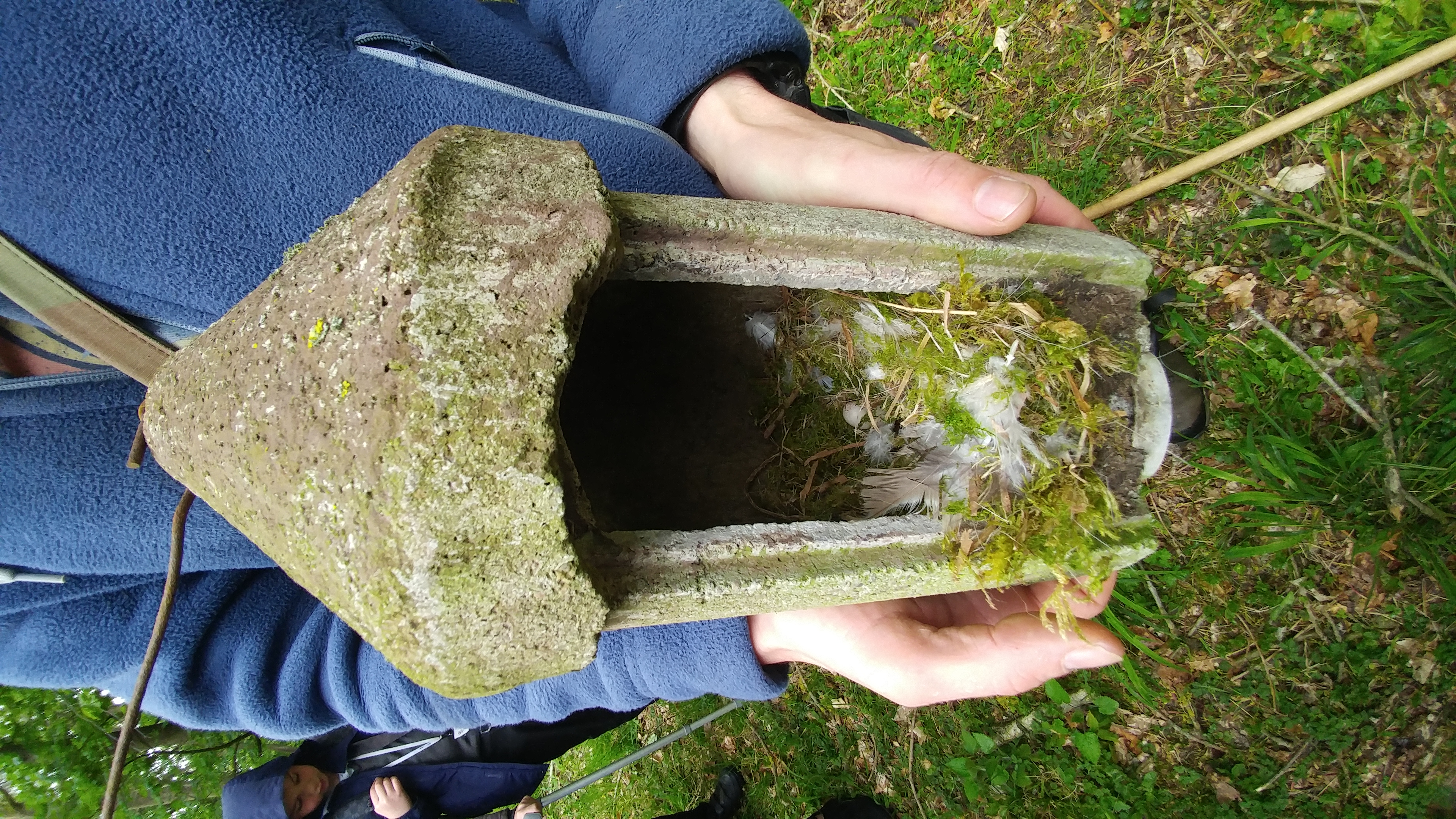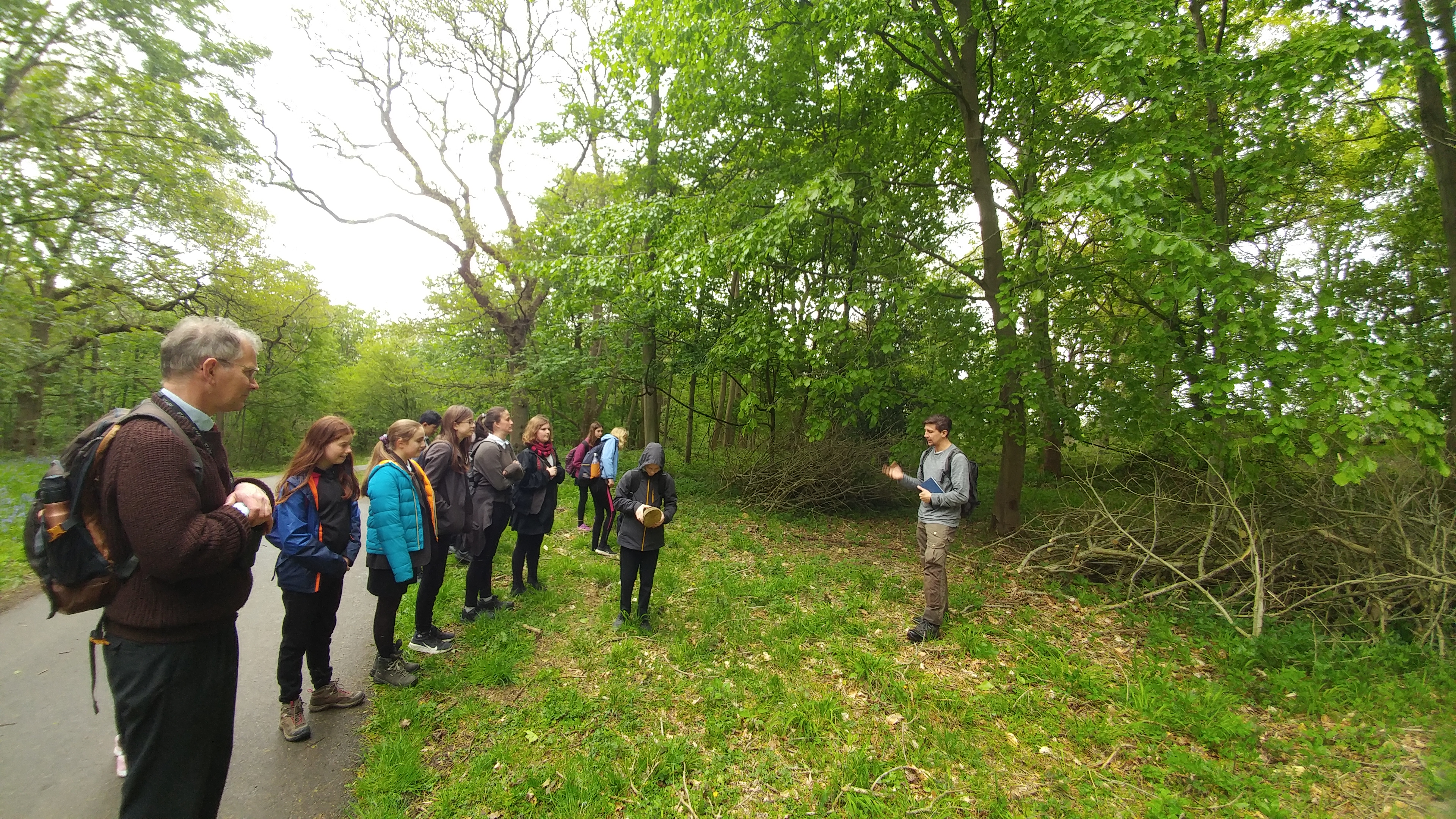 On Tuesday 11th May, the Year Eight Museum Council were fortunate enough to be able to visit beautiful Wytham Woods and see nesting boxes with Sam and Keith from the Edward Grey Institute team.
On Tuesday 11th May, the Year Eight Museum Council were fortunate enough to be able to visit beautiful Wytham Woods and see nesting boxes with Sam and Keith from the Edward Grey Institute team.
We heard how birds' eggshells are made of calcium which the birds get from eating snail shells, and that at a particular point, the birds are able to release the calcium they have stored to coat the egg. We saw some blue tit eggs which had been abandoned by the mother. Sometimes the mother gets the timings a bit out, and doesn't have the energy to devote to the eggs, which is why they get abandoned. We were told how climate change has caused a gradual shift in the intricately timed ecological systems which enable birds to be ready to lay their eggs, and this process now occurs two weeks earlier than before. We also found out that blue tits grew more yellow on their breasts if they had eaten more caterpillars.
We saw a baby chick, which was recently hatched, and didn't look much like a bird at all! We also saw some blue tits flying from the boxes. We saw some mechanised feeders, which used infrared technology to ensure that only certain birds could feed from particular feeders, and heard all about the various other projects being explored and developed.
Most of this took place during an atmospheric thunderstorm, which made us all a bit soggy, but created a very special experience in the woods!
The Wytham Tit Project was set up in 1947 and involves studying great tits and blue tits. Wytham Woods was given to the University by the Ffennell family in 1942. The woods are used by scientists to research environmental changes and behaviour of different species. There are over 1000 fixed location nest boxes in the woods, and the students were able to find out more about the project, as well as to see inside some of the boxes. You can find out more about Wytham Woods here.

 On Tuesday 11th May, the Year Eight Museum Council were fortunate enough to be able to visit beautiful Wytham Woods and see nesting boxes with Sam and Keith from the Edward Grey Institute team.
On Tuesday 11th May, the Year Eight Museum Council were fortunate enough to be able to visit beautiful Wytham Woods and see nesting boxes with Sam and Keith from the Edward Grey Institute team.